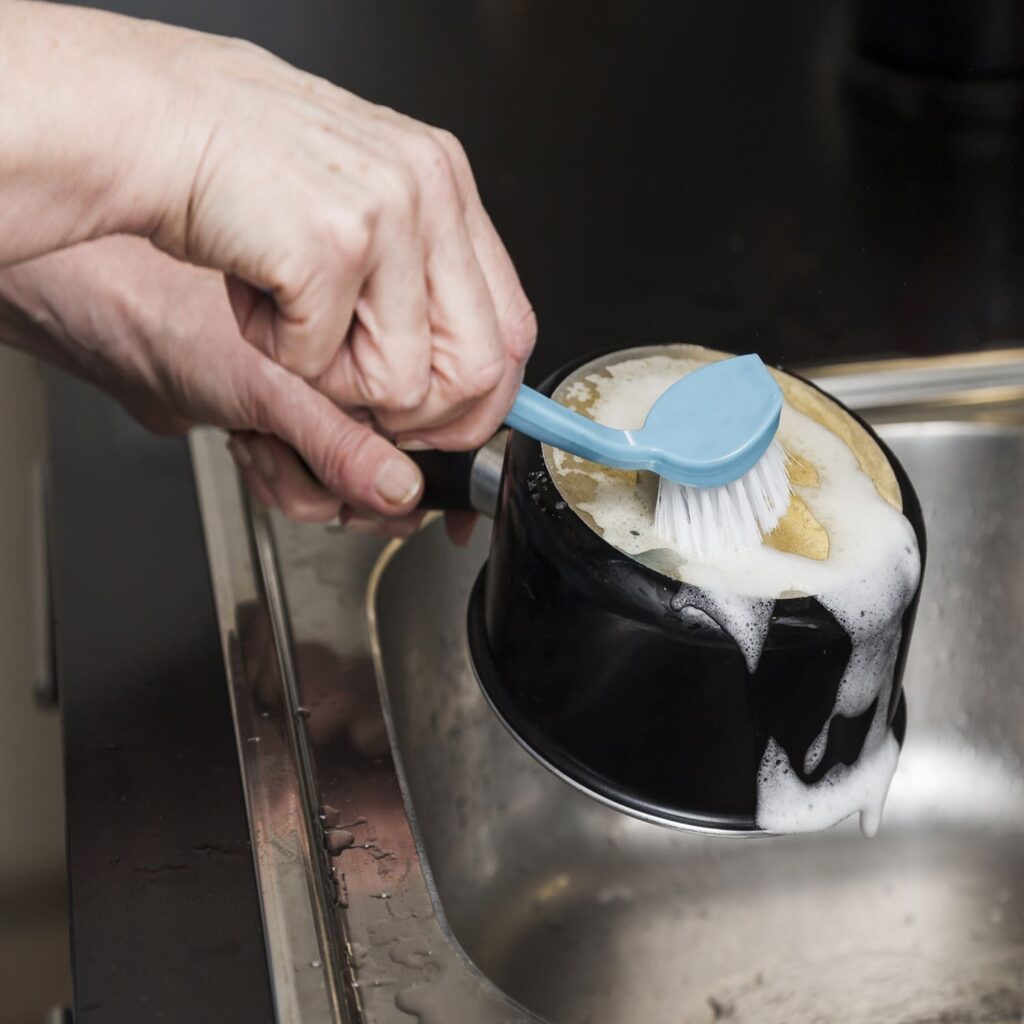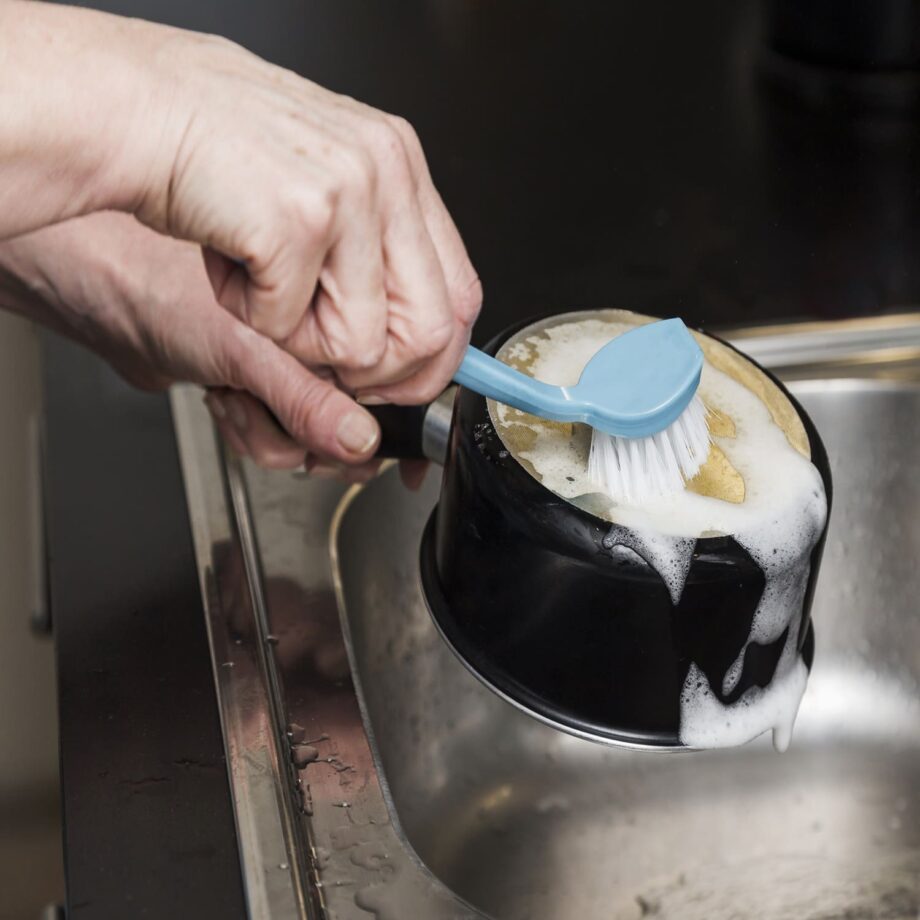Learn how to remove rust from kitchen tools effectively with simple, natural methods. Discover tips using vinegar, baking soda, lemon, and salt to restore your utensils safely
Rust on kitchen tools can be frustrating. Not only does it make your utensils look old and worn, but it can also affect food safety. Luckily, removing rust is easier than you think. In this guide, we’ll show you simple and effective ways to remove rust from your kitchen tools, using common household items.

Why Rust Forms on Kitchen Tools
When iron or steel comes into contact with oxygen and water, a chemical reaction known as oxidation takes place, resulting in the formation of rust. This process eventually results in iron oxide, or rust, which can erode your kitchenware and render it unfit for use in cooking.
Not even kitchenware made of stainless steel is impervious. Rust can be caused by minor dings, chips, or extended exposure to moisture. Among the elements that cause rust are:
Leaving wet cutlery in the dishwasher or sink
Keeping tools in places with inadequate ventilation or moisture
Contact with foods high in acid can hasten corrosion.
Using inferior metal tools without the appropriate coatings for protection
It’s critical to comprehend the causes of rust formation so that you can take preventative action. The risk can be considerably decreased by thorough drying, regular cleaning, and appropriate storage. But don’t worry if rust has already started to show; there are simple DIY ways to get your kitchenware back in working order.
1. Use White Vinegar to Remove Rust
One of the best natural rust removers is white vinegar. Rust is broken down and separated from the metal surface by its acetic acid reaction. Knives, pots, pans, and other metal kitchenware are good candidates for this technique.
How to Use White Vinegar to Remove Rust:
Get a container ready: Fill a bowl or container with enough white vinegar to completely submerge the rusty kitchen tool.
Soak the tool: Submerge the rusted object in the vinegar and leave it there for two to three hours. It might work better to soak heavily rusted items overnight.
Scrub the rust: Gently scrub the rusted areas with a soft brush, sponge, or steel wool. To prevent scratching the surface, use delicate utensils with caution.
Rinse and dry: To get rid of any remaining vinegar, give the tool a good rinse with water. To stop fresh rust from developing, dry right away with a fresh towel.
2. Apply Baking Soda Paste to Remove Rust
Baking soda is the perfect rust remover for kitchen tools with light rust because it is gentle, non-toxic, and very effective. When used properly, baking soda won’t harm cast iron, stainless steel, or other metals and is safe for surfaces that come into contact with food, unlike harsh chemical cleaners.
This technique is ideal for people who prefer environmentally friendly cleaning products and works best on slightly rusted knives, spoons, forks, or small kitchen appliances.
Steps to Remove Rust with Baking Soda Paste:
Make a thick paste: In a bowl, combine baking soda and a small amount of water until a smooth, thick paste forms. Spreadable but not too runny is the ideal consistency.
Apply to rusty areas: Apply the paste directly to the rusty areas using a clean cloth, brush, or your fingers. Ensure that the entire rusted surface is covered.
Let it sit: Give the metal 30 minutes to sit with the baking soda paste on it. This allows the rust to be penetrated and loosened. You can leave it for up to an hour if the rust spots are really bad.
Gently scrub: After waiting, give the rusted area a scrub with an old toothbrush, sponge, or soft-bristled brush. Baking soda’s gentle abrasive action eliminates the rust without causing any scratches to the metal surface.
Rinse and dry completely: To get rid of any remaining paste, rinse the kitchen tool with clean water. To stop moisture from causing fresh rust, dry it right away with a fresh towel.
3. Lemon and Salt Method to Remove Rust
Rust can be removed from kitchen tools naturally and environmentally with the lemon and salt method. Salt works as a gentle abrasive to remove the rust without damaging the metal, while lemon juice’s citric acid reacts with rust (iron oxide) and aids in its dissolution. For knives, forks, spoons, pans, and small metal devices, this technique is especially effective.
Steps to Remove Rust with Lemon and Salt:
- Sprinkle salt on the rusted area: Use coarse or table salt to cover the rusted spots evenly. The salt will help scrub away rust as you work on it.
- Apply fresh lemon juice: Cut a lemon in half and squeeze the juice directly onto the salted area. Make sure the rusted surface is completely soaked in lemon juice for the best effect.
- Let it sit: Allow the lemon juice and salt mixture to sit on the tool for at least 2 hours. For heavier rust, leaving it for 4 hours or overnight can improve results.
- Scrub the rust off: After soaking, use a soft sponge, brush, or cloth to scrub the rust away. The combination of acid and abrasive action loosens rust effectively.
- Rinse and dry thoroughly: Rinse the tool under clean water to remove all lemon juice and salt residues. Dry immediately with a clean towel to prevent moisture from causing new rust.
While learning how to remove rust from kitchen tools, it’s also important to know the differences in cooking ingredients. For example, understanding the difference between chicken stock and chicken broth can help you use your kitchen tools more effectively in your recipes.

